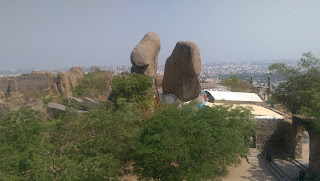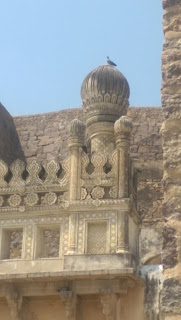The trip alternated between high-intensity activity and sitting around doing nothing but eating. I like to do both, of course, but more balance might have been welcome. Day 1 we napped and chatted and went grocery shopping. T's mom wanted to make sure that we had good old American food like butter, bread, cheese, and ice cream. (We had already brought tea, coffee, and Nutella.) I looove going to grocery stores in other countries. As an American I find that the fluorescent lights and ordered aisles full of insipid canned goods soothe home sickness and I'm fascinated by which foods are imported. Oreos and ketchup seem pretty universal. Anyway, I immediately established myself a reputation as the more adventurous sister when I bought mosambi (sweet lime) juice and some tamarind-chili chews. (If you want to send me some of those candy I'll love you forever.)
In my mind, most of the vacation centered around food. I spent much of every: day asking "What is this? How do you make this? Can I have more?" Sprinkled throughout my notes are names of the foods I tried:
idly: small flour pancake with coconut chutney
sabudana khichidi: tapioca balls with ground nut and lime
jaggery: molasses
badai: lentil donut
poori: fried bread
noodle dhosa: dhosa filled with noodles? a travesty
On Day 2 we ventured out to Golconda Fort. Golconda, which according to Wikipedia means round hill, was built, expanded, and finally abandoned between 1150 and 1687. It is the home of the Hope diamond and water-testing goats.
Although my sister M and T and I were travelling with his brother, niece, nephew, cousin, cousin's wife and cousin's child, the guide only addressed the whitest among us. It was disconcerting to say the least. I'm not always a good listener and I sometimes wander off but I was unable to do so on this tour because the guide would not speak to the group unless M and I were paying rapt attention. Maybe he expected a giant tip; little did he know that neither of us carried any money on the entire trip.
We entered the fort at the Victory Gate (clapping portico on the map), where the sound of a handclap under the dome, through some acoustic magic, can be heard at the top of the fort. The nine of us stood there clapping for a while before hiking up a few thousand steps in the hot hot sun (this will be the theme of our travels in India) to explore the Hindu temples, the mosque, the royal chambers, and ye olde ice cream stand.
We were often surrounded by hordes of schoolchildren in uniform with a brave few approaching M and me to ask where we were from. Honestly, there were very few tourists for them to practice on. I saw only a group of sweating Canadians, some Italians and a lone Korean (who ignored any guides who approached him like he could see through them.)
I only absorbed a few facts during our tour:
- The walls in the royal chamber also have an acoustic trick. a whisper in one corner can be easily heard on the opposite side of the room. The queen's makeup room, by the way, was larger than my apartment.
- The fort had several water storage tanks. In order to maintain quality they would have goats drink the water before drawing it for human consumption. If the goats survived it was ok to drink. I'm not sure how logical this is as a goat can eat a tin can and I can't.
- The fort was the center of a very lucrative diamond trade.
- Some Indian reporters are sarcastic and dismissive of the guides and clapping tourists: read it. It's hilarious.
- T does not like having his picture taken and has asked that I not publish any photos of him so despite having rare people photos, I can't put them on the blog.
- The Hindu temple was designed to look like a bull.
 |
| See? |
 |
| See from a different angle? |
While I didn't retain much -- I may have sweat out much of the information -- it is a recommended visit, if only for the workout - and imagining the following views from the 1200s.











No comments:
Post a Comment